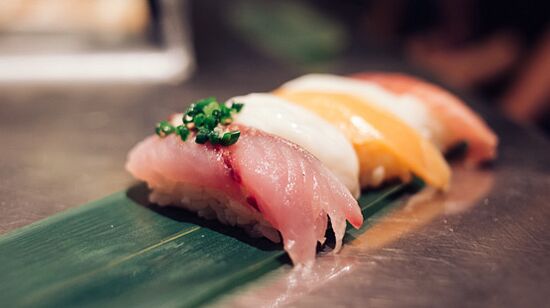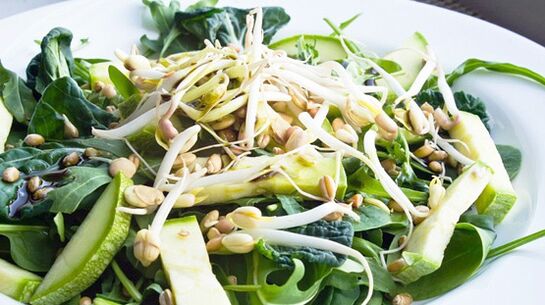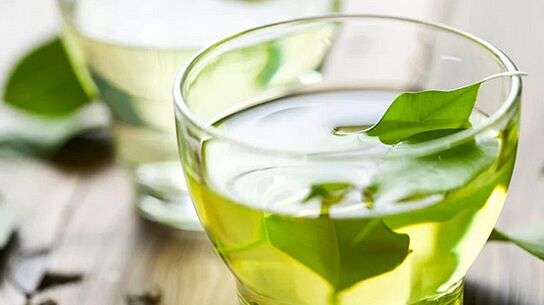
Let's say right away. Most of the "Japanese" diet online has nothing to do with Asian cuisine or the diet that will be discussed below.. Usually, these artificialJapanese dietthey recommend that you eat "bird-sized" portions of boiled cabbage, a few eggs and 100 grams of meat or fish a day, reduce the number of meals to three and live in this mode for up to 2 weeks. No! Such a small diet is not suitable for an active working person.
Why is the Japanese theme and everything that beats it so popular?
The land of the rising sun will always be attractive and incomprehensible to Europeans. Perhaps this is because Japan has long been a well-closed state of Western civilization. What are they, the Japanese, in our traditional view? They are technologically advanced but believe in the spirit; conservative, but invented the "Ganguro" style; restrained, but capable of wild release; may value life even in a tiny pole, but historically suicide rose to the rank of honor. The islanders gave the world the best wonderful engravings and Pokémon. They are also thin and live long. Why?
You can talk about genetics and physiology, or you can answer like this: we are what we eat.
The article is based on the book The Japanese Diet by Elisa Tanaka.
Traditional elements of Japanese cuisine
I lay in the shadows
My rice is pushing me
Fjalllækur.
Rice
In Japan, rice, like bread for us, is "the head of everything. " It is a healthy source of carbohydrates that does not containgluten free. The people of Japan eat various types of rice, but prefer to eat the edge of rice cooked with sesame oil.
Fish and seafood

Fish dishes are in second place in terms of quantity in the daily diet of the people of the sunny country. The protein structure of fish meat is perfect, digestible and contains essential amino acids that are essential for man. However, the Japanese do not eat smoked or salted fish - only fresh sea or fresh water. The fat in the fish is digestible and will not be put on your thighs with a disgusting cell, but it will give your body full polyunsaturated fatty acids.
Seaweed
Seaweed (aka kelp, brown seaweed) is widely used in Japanese cuisine: it is added to rice, fish dishes or soy dishes. Laminaria is a good prevention against thyroid disease, atherosclerosis and heart attack, rich in iodine, minerals and nutrients. Residents of the Japanese islands also use dry kelp instead of regular table salt.
Vegetables and legumes
Real Japanese cuisine is impossible without vegetables. This is of course all kinds of cabbage, radishes, garlic, green onions, cucumbers and tomatoes, eggplant, carrots, peppers, legumes, asparagus, spinach, celery and all kinds of salads.
Sprouts and shoots

Valuable sources of nutrients, where sprouts are eaten in "living" form - that is, their benefits are not killed by heat treatment. In addition, germinated grains are more useful than "sleeping" grains, because all life processes are activated in it.
Fruits and berries
Instead of traditional pastries and sweets for us, Asians eat fruit as a dessert. At the same time it is important to eat fruits and berries in season, there are no strawberries in winter.
Spices and condiments
Curry, black, red and cayenne pepper, anise, turmeric, garlic, horseradish, dill, ginger (fresh and pickled), basil, mustard seeds, coriander, cinnamon are commonly added to many dishes. But the bay leaf, on the contrary, is not used. Salt is also not high, instead use dry kelp powder (as mentioned before), soy sauce or sesame oil.
Green tea

Tea is believed to have many medicinal properties: strengthens teeth, soothes the soul, treats heart disease, neutralizes toxins and helps to achieve longevity. The basic principle of Japanese tea drinking is: "Drink - share, refill - drink. " Another cup of tea is considered the most valuable (especially if you brew tea in the cup itself).
Tofu (bean cheese)
It is a bean cheese that gives Asian vegetarians perfect protein: 240 g of tofu contains as much protein as it contains in two chicken eggs. 100 g of tofu is 20% richer in calcium than 100 g of cow's milk. Soy protein is digested by 95%, it is rich in lysine, calcium, iron, vitamins B, E and K. Tofu is a great food product and despite all its high nutritional value, cheese is very low in calories. It has littlecarbsand no cholesterol. Unlike meat, which is sour, tofu is alkaline. And nutritionists say that an alkaline environment is more beneficial than an acidic environment and recommend eating at least 25 grams of soy protein daily.
Benefits of the Japanese diet
Many people do not tolerate diet simply because diet is very restrictive in taste, sometimes too limited what we eat. The pleasure of the taste of food is the joy that can not be left for a long time and without harming well-being or mood. The real Japanese diet consists of delicious dishes made from products that are healthy for the body and low in calories.
Disadvantages of the Japanese diet
The diet assumes that you need to master some recipes of Asian dishes and also requires certain adjustments. This diet is technically more complex than many others, where you only eat a few foods and eat for a while or until you get sick of them.
Japanese cooking techniques can be seen as another talent in your arsenal, like the ability to sit on a twine - this can be surprising, this can be proud of.
So, from the kitchen supplies you need:
- Wok, or wok for quick frying or frying;
- Pans with non-stick coating;
- Double kettle (instead of a double kettle you can put a metal sink in the pan);
- Food processor, mixer;
- Wooden utensils made of beech, cherry or maple to stir in cooked food: wood does not absorb odors and lasts a long time;
- Wooden spear or spear.
To cook you need:
- Various types of rice;
- Noodles;
- Mushrooms;
- Spices and herbs;
- Sauces: soy, teriyaki, fish, oysters.
Japanese foods should not be a big problem for you, now you can buy them in any supermarket or you can easily replace them with any of our ingredients. Do not be afraid to experiment.
Japanese diet: principles

The Japanese menu includes many soups and vegetarian dishes.. This is a great weight loss method, as such dishes are low in calories and good for digestion. And dietary fiber from vegetables in the composition of vegetables will give your stomach the necessary satiety, so you will not feel a terrible hunger.
Number of calories on the menutip without adding sugar or cream to drinks. Therefore, do not forget to add 16 kcal per 1 teaspoon to your daily calorie intake. sugar and 36 kcal per tablespoon of cream (if you use them). In other words - sugary coffee - reduce the volume of the main dose. Soy milk is recommended instead of cow's milk.
The optimal amount of calories consumed per day should be in the range of 1200-1400 kcal (for women). It is this number of calories that is sufficient for the body's life at rest, before eating and at average ambient temperatures. On the one hand, it does not cause pathological changes in metabolism to reduce calories to 1200-1400, on the other hand, it allows you to live the day to the fullest (does not feel degraded) and fitness classes will get energy by burning your own fat reserves.
The danger of a diet that reduces calories below 1200:
- With rapid weight loss, you will also quickly gain the lost pounds or even more;
- A dry diet will adversely affect the condition of the skin, hair and nails and lead to loss of muscle mass;
- The more muscle you lose, the slower your metabolic rate will slow down, making it harder to lose weight or maintain weight.
The main rules of the Japanese diet
- Do not try to speed up the process of losing weight artificially, reduce the number of calories (we wrote about the consequences above). You should not lose more than 1 kg per week.
- Stay between 1200-1400 calories a day. Be sure to add vitamins and minerals.
- Maintain energy balancebetween received energy and consumption. We get calories from food, with the help of exercise we consume. Violation of this balance, unfortunately, leads to overweight.
- The key to weight loss in the Japanese diet is a varied dietand small portions, the transition from fatty meat dishes to a healthy diet based on fruits, vegetables and seafood.
Asian nutritionists have developed a healthy food pyramid that can be used as a guide when planning your diet and the proportion of certain foods in it.
Tips for effective weight loss on the Japanese diet
- Keep track of your exercise and diet (calorie count). This makes it easier to see progress;
- Follow the exact diet and dosages chosen;
- Do not think of food as "good" or "bad", enjoy eating;
- If any of the days you indulged in high-calorie foods, be sure to cut down on your calorie-restricted diet the next day;
- Do aerobic exercise.
You may initially lose more than one pound per week. This is due to dehydration in the body. Then the weight loss will slow down, but not despair - this is a perfectly normal healthy weight loss process.
Example of a Japanese diet for 14 days (table)
| Day | Menu of the day | |||
| breakfast | Lunch | Snack | Lunch (dinner) | |
| one |
|
|
Apple. Calories: 80. |
|
| Total daily calorie intake1428 kcal | ||||
| 2 |
|
|
1 cup of sugar-free coffee. Calories: 5. |
|
| Total daily calorie intake1386 kcal | ||||
| 3 |
|
|
1 glass of soy milk. Calories: 150. |
|
| Total daily calorie intake1334 kcal | ||||
| four |
|
|
Calories: 30. |
|
| Total daily calorie intake1424 kcal | ||||
| 5 |
|
|
1 orange (fruit salad) Calories: 141. |
|
| Total daily calorie intake1443 kcal | ||||
| 6 |
|
|
|
|
| Total daily calorie intake1433 kcal | ||||
| 7 |
|
|
1 glass of soy milk. Calories: 150. |
|
| Total daily calorie intake1392 kcal | ||||
| eight |
|
|
1 glass of vegetable juice. Calories: about 70. |
Calories: 576. |
| Total daily calorie intake1424 kcal | ||||
| 9 |
|
|
120 g fruit yogurt. Calories: 60. |
|
| Total daily calorie intake1440 kcal | ||||
| ten |
|
|
10 young carrots. Calories: 38. |
|
| Total daily calorie intake1303 kcal | ||||
| eleven |
|
|
|
|
| Total daily calorie intake1290 kcal | ||||
| 12 |
|
|
|
|
| Total daily calorie intake1441 kcal | ||||
| 13 |
|
|
1 bowl of cherries. Calories: 31. |
|
| Total daily calorie intake1430 kcal | ||||
| fourteen |
|
|
10 young carrots. Calories: 38. |
|
| Total daily calorie intake1272 kcal |
If you're a little scared of the names of dishes (which you have probably never cooked) - do not worry, there are recipes for all the dishes that appear in the Japanese diet.
We save the results
You need to leave the diet and increase the number of calories gradually so that you can keep your weight unchanged. Just add 100 calories to your diet for 14 days. At the same time, you need to control your weight. If the scales continue to show weight loss, add an additional 100 calories over the next 2 weeks and check the scales again. Once the weight has reached equilibrium, you decide for yourself the number of calories needed to maintain a stable weight.
100 calories are:
- pork, beef - 80 g;
- 1 boiled chicken breast;
- 150 g of fish;
- one egg or 2 egg yolks, or 5-6 proteins;
- glass of milk;
- yogurt - 125 g;
- glass of kefir;
- small slice of bread;
- beans - 25 g (3-4 tablespoons);
- fresh cabbage - 1 kg;
- fresh cucumber - 750 g;
- 3-4 large carrots;
- one large potato tuber;
- 590 g of tomatoes;
- 625 g sauerkraut;
- banana - less than 1 pc. ;
- apricots - 210 g;
- fresh strawberries - 325 g;
- 1 large apple;
- 1 large orange;
- 2 kiwis;
- peaches - 250 g;
- 4 mandarins;
- plum - 200 g;
- 1 grapefruit;
- watermelon - 285 g;
- 1 large pear;
- melon - 190 g;
- 15-20 large grapes;
- all nuts (2 tablespoons) - 15 g;
- noodles - a dose the size of a palm;
- muesli, oatmeal - 1/3 cup;
- porridge on the water - 5-6 tbsp. l. per dose.
We hope you enjoy it! Good luck!
















































































